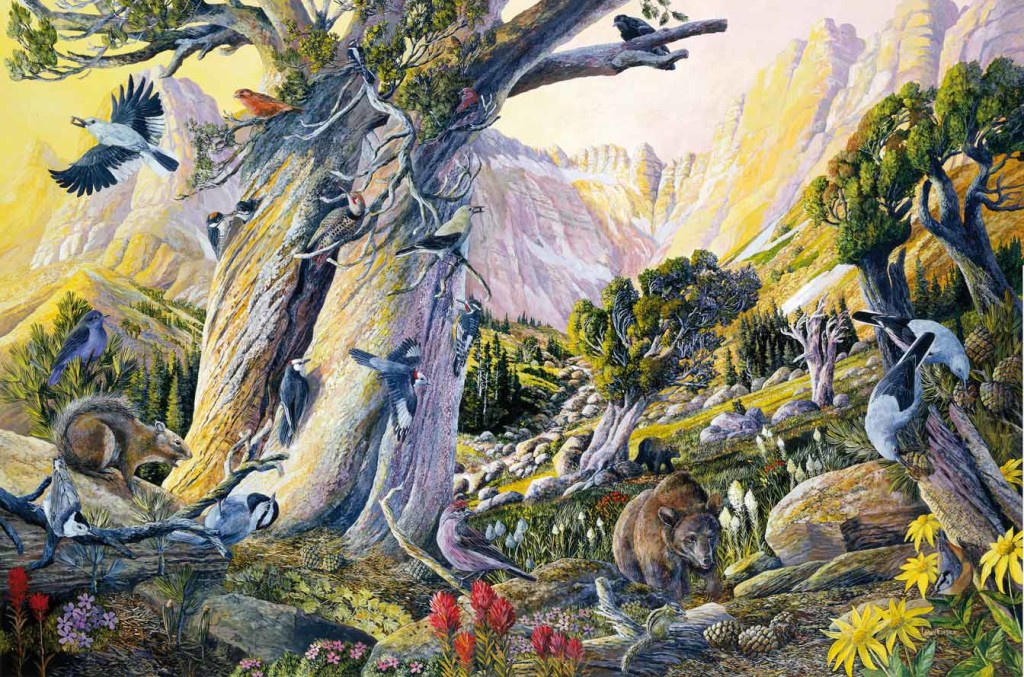
Commissioned by Crater Lake Institute and painted by Larry Eifert in 2007, this painting focuses on the keystone species that is rapidly declining throughout the West. It shows the entire ecosystem that is dependent on this tree for food and shelter. It was featured in several magazines and other publications, including a feature in American Forests magazine.
Whitebark Pines in the Rockies mural species list
- Whitebark Pine Pinus albicaulis
- Common Raven Corvus spp.
- Hairy Woodpecker Picoides villosus
- Red Crossbill Loxia curvirostra
- Clark’s Nutcracker Nucifraga Columbiana
- Black-backed Woodpecker Picoides arcticus
- Smoke from a distant wildfire
- Whitebark Pine Pinus albicaulis seedlings and young saplings – the next generation of whitebarks are beginning
- Mountain Bluebird Sialia currucoides
- Red Squirrel Tamiasciurus hudsonicus
- White-breasted Nuthatch Sitta carolinensis
- Mountain Chickadee Parus gambeli
- Fire scar on trunk of whitebark pine – indication of past fires these trees have survived.
- Whitebark Pine seedlings – the next generation of whitebarks.
- Spreading Phlox Phlox diffusa
- Currant Ribes spp. Host species for blister rust pathogen Cronartium ribicola that is currently killing many of these ancient whitebark pines.
- White-headed Woodpeckers Picoides albolarvatus
- Northern Flicker Colaptes auratus
- Pine Grosbeak Pinicola enucleator
- Clark’s Nutcracker Nucifraga columbiana
- Williamson’s Sapsucker Sphyrapicus thyroideus
- Cassin’s Finch Carpodacus cassinii
- Paintbrush (Castilleja miniata)
- Chipmunk (Eutamias spp
- Grizzly Bear Ursus arctos horribilis
- Beargrass Xerophyllum tenax
- Whitebark Pine cones and seeds, important food sources for all these animals and birds.
- Arrowleaf Balsamroot Balsamorhiza sagittata
- Red-breasted Nuthatch Sitta Canadensis
- Clark’s Nutcracker Nucifraga columbiana tearing cones apart for seeds.
- Black Bear Ursus americanus
- Mature and healthy whitebark pine
- Dead whitebark pine, providing homes for birds and animals
- Brown whitebark pine treetop needles showing effects of blister rust pathogen Cronartium ribicola
***previous*** — ***next***

